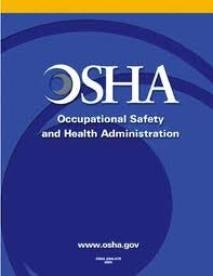During a 2013 visit to Texas, Dr. David Michaels, Assistant Secretary of Labor and Administrator of the Occupational Safety and Health Administration (“OSHA”), spoke at multiple stakeholder events of OSHA’s growing concerns with respect to worker safety in the Texas oil patch. Dr. Michaels left no doubt during his Texas visit that he and his agency would devote greater resources to regulating the industry.

Last week, as part of that enhanced enforcement focus, OSHA announced that it is elevating its Lubbock location from a district office under the El Paso area office to a full area office. The agency is also growing its enforcement team in the Lubbock office, adding three new compliance officers who will concentrate primarily on oil and gas operations.
OSHA officials have expressed concern that labor shortages in the oil and gas industry in West Texas have contributed to greater safety risks, with some oil and gas drilling and servicing employers reportedly putting new employees to work without proper safety training.
In addition to safety training, employers should expect OSHA compliance officers to focus particular attention on, among other matters, hazards related to hydraulic fracturing activities, including silica exposure concerns as well as heat-related hazards, flame-resistant clothing (FRC), electrical hazards, mechanical hazards, and other issues.
While many of these issues are germane to general industry, an emerging area of concern specific to hydraulic fracturing is the issue of silica exposures from frack sand. OSHA first issued a hazard alert on silica in 2012, after a National Institute of Occupational Safety and Health (NIOSH) study of hydraulic fracturing sites found that workers exposed to silica dust from frack sand for sustained periods without adequate controls face a higher risk of developing silicosis—a lung condition similar to asbestosis—over time. NIOSH and OSHA have identified seven primary potential sources of silica at hydraulic fracturing sites, and recommend a number of preventative measures, including engineering controls to reduce silica generated in operations, respiratory protections, and worker training.
Note that, while these are recommended measures at present, affirmative mandates may be coming soon. In 2013, OSHA proposed an amendment to the current Protective Exposure Level (PEL) for silica, reducing it by 50%. OSHA acknowledges that, if the new PEL is adopted, over 10,000 hydraulic fracturing workers will be affected, requiring companies to implement substantial and costly new controls of arguable feasibility, especially for smaller operators. Due to these impacts and other concerns, API, IPAA and other industry groups have filed public comments opposing the proposal as currently drafted. OSHA is still considering these comments, and it remains to be seen how the final rules will come out. Even with modifications, however, it seems certain that the new silica rule will have a substantial impact on fracking operations.
In the meantime, employers’ best course of action in managing worker exposure to silica dust is to adhere to the guidance provided in OSHA’s 2012 hazard alert. For other general oil-and-gas related safety issues, OSHA also maintains a separate website identifying common hazards encountered in upstream oil-and-gas operations and recommended work practices to mitigate those hazards.
As a result of OSHA’s new enforcement effort, oil and gas businesses in West Texas—and, for that matter, throughout the rest of the state—should expect more site visits by OSHA compliance officers. Companies can also expect to see OSHA increasingly seeking to hold rig owners and operators responsible for noncompliance as opposed to simply citing contractors or other intermediaries, and a less forgiving approach to noncompliance in general.



 i
i


